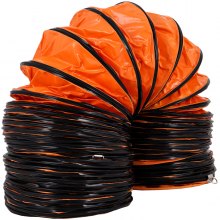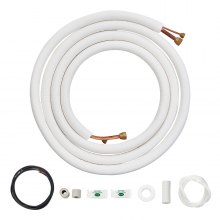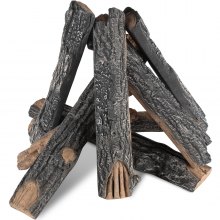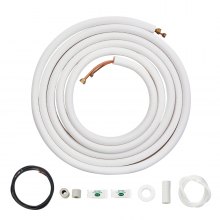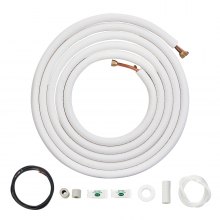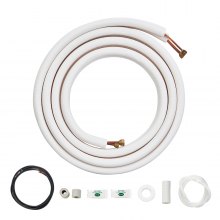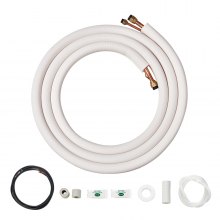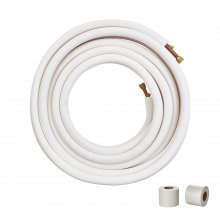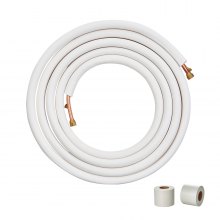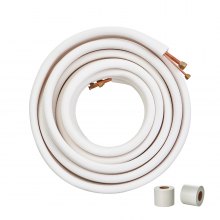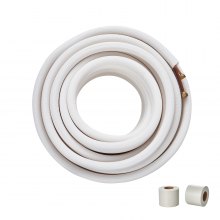Beat the Heat with VEVOR's Energy-Efficient Evaporative Cooling
Join us as we discover the world of swamp coolers and enter the refreshing realm of energy conservation and cool comfort. These clever gadgets are your way to combat the heat without going over budget. Envision a cooling system that follows the laws of nature, bringing cool, fresh air to even the hottest climes.
With VEVOR's Swamp Coolers, you may enter a comfortable haven where being cool is an art form rather than a possibility. These technologically and naturally inspired cooling miracles swish away the stifling heat, leaving you in an efficient and revitalizing embrace.
How Do Evaporative Coolers Work?
An air conditioner known as an evaporative air cooler uses the process of evaporation to lower air temperatures. Water vaporizes, converting from fluid to gas. As a result, the temperature drops because the particles with the highest energy exit the water first.
An evaporative cooling system automates evaporation to effectively cool the air in your house. The machine will often include a fan, a firm pad, a tank for water, and a few other controls for adjusting the outcome.
The fan draws hot, dry air into the machine and over the cooling pads. These thick pads have multiple layers to maximize surface area and absorb liquid from the reservoir. The water droplets on the pad's surface evaporate when hot air passes over them, lowering the cooler's interior air temperature.
The fan then forces the cool air into your room, allowing you to experience the coolness on a hot day. Other functional components may also be incorporated into evaporative coolers. Many make use of air filtration and pads that are intended to enhance the quality of the air by lowering allergens and preventing the growth of mildew.
Although not necessarily required, a water pump can facilitate the penetration into the coolant pad. To do more to freeze the air, the fan blasts into the room, and certain models let you add an ice pack. Additional helpful features include a remote control, oscillating functions, and variable fan speeds.
What Are The Benefits Of A Swamp Cooler?
Are you trying to find economical strategies to maintain a cool house? For homeowners, a swamp cooler can be a terrific source of cooling comfort. They are far less expensive than a conventional central air system. Additionally, they consume less energy than central air conditioning.
Cost Effective
A cooling system's cost should be your main priority, and when cost is compared between HVAC systems and evaporative coolers, HVAC systems come out on top. The warmest months of the year are less expensive to operate, build, and maintain using evaporative coolers.
Using a swamp cooler rather than an air conditioner can save your energy costs by up to 80% because many coolers don't consume much energy.
Requires Minimal Water
Even though evaporative coolers need water, there are a variety of models to select from. Some work by filling water reservoirs regularly. Some are connected to a real water pipeline. Whichever way you choose, very little water is used. This guarantees you won't switch from having a high electricity bill to a high water bill.
Environmentally Friendly
Evaporative coolers are a more environmentally friendly option for HVAC systems than costly chemicals and refrigerants. It uses much less energy since fresh, cool air is used. Because no hazardous refrigerants are utilized, the ozone layer isn't being destroyed, or greenhouse gasses are released into the atmosphere.
Installation and Maintenance Tips For A Swamp Cooler
The purpose of an industrial air cooler is to use evaporation to reduce heat and provide moisture to the air. It is less expensive, more efficient, and less environmentally harmful than conventional air conditioners. Furthermore, it has greater power than the average outdoor fan. Here are some pointers to ensure proper installation and operation of a swamp cooler.
Tips for Installation
· Mounting the cooler: Installing an industrial air cooler outside your house or building is necessary. Depending on the kind of cooler you've selected, you can mount it in several places.
· Installation height: A minimum of 10 feet should separate industrial air coolers from plumbing combustion machine vents, exhaust fan vents, clothes drying vents, and plumbing vents, or 3 feet below them.
· Water line: A consistent supply of pure water is necessary for an industrial air chiller. Ensure the water line is connected to the system from an external water supply with shut-off valves.
Tips for Maintenance
· Regular change of cooler pads: Regularly replace the cooler pads. The cooler is placed up against the pads. Rainwater flowing down the cooler and landing on the pad might lead to cooler rust if the pads are old and have gathered dirt and minerals.
· Winterize the cooler: Switch off the water supply, wash off the water pan, and remove any dirt or minerals that may have accumulated in the cooler over the winter to prevent rusting.
· Protection for the cooler: Purchasing a swamp cooler covering will assist in keeping outside air out of your house or structure. Evaporative coolers can occasionally have dampers. If your cooler lacks one, putting a cooler covering will help it last longer and save you money.
Why Choose VEVOR Evaporative Coolers?
With VEVOR Evaporative Coolers, you may experience cooling like never before. Discover the key to unparalleled comfort because these air coolers combine state-of-the-art engineering with environmentally responsible splendor.
Utilize the natural wonder of water as VEVOR's coolers convert heated air into a cool haven, skillfully reducing temperatures with an energy-saving dance. With whisper-quiet operation guaranteed by precision engineering, every moment is a peaceful reprieve from the heat.
FAQs About Swamp Coolers
Are swamp coolers suitable for all climates?
In dry climes, swamp coolers work well; in humid climates, not so much. Because they rely on evaporation for cooling, they are less appropriate for locations with constant high humidity.
Do swamp coolers add humidity to the air?
Yes, swamp coolers produce atmospheric cooling by evaporating water and adding humidity. They work better in arid conditions than in humid ones.
Can swamp coolers be used in commercial or industrial settings?
Although swamp coolers work well in dry climates, their limited cooling capacity may cause problems in big commercial or industrial facilities, where specialist HVAC systems would be a better fit.








































